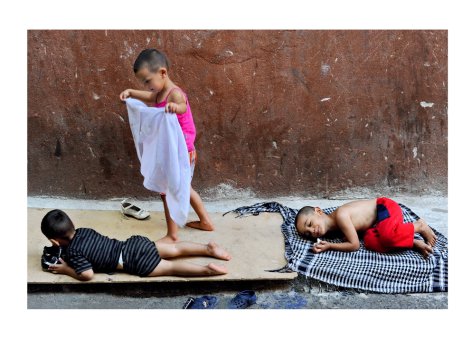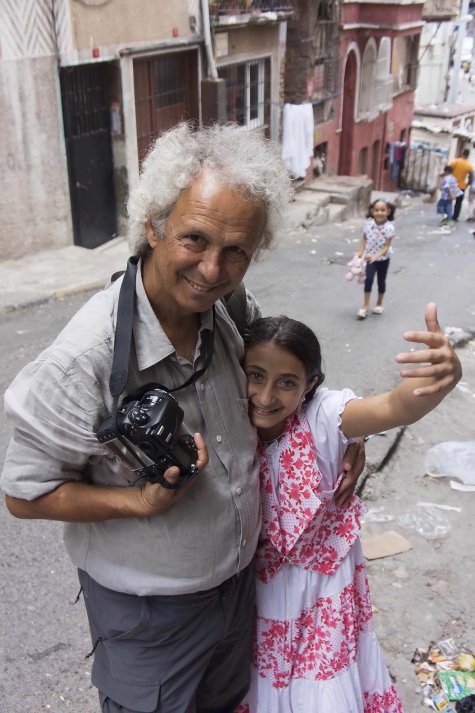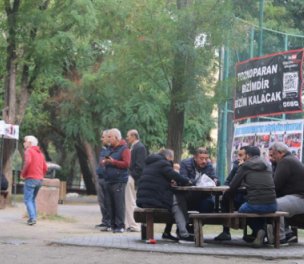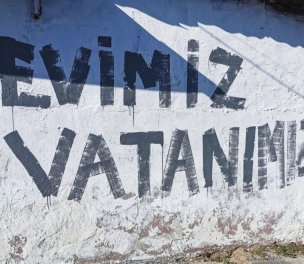Click to read the article in Turkish / Kurdish
A selection of works of Ali Öz, a photographer who, for two years, has been capturing images of Tarlabaşı, a district of İstanbul that has been suffering a "destruction/annulment" process due to gentrification, will be presented in the exhibition "Tarlabaşı: A defiled İstanbul district" in Vienna.
The exhibition that will host a selection of over 30,000 images of Tarlabaşı, which will, according to Öz, "brings us face to face with this process in its all vividness, a poignant reality which is hardly aesthetic", will be open to public from November 22, 2017 to January 6, 2018 in Mekan 68 in Vienna, Austria.
"Tarlabaşı sacrificed in the name of gentrification"
"The streets that make up the physical fabric of the neighbourhood, the buildings that give colour to those streets, its houses, its workplaces, and the men, women, and children who live there... a thousand and one varieties of life are being destroyed/annulled", Öz says and denounces: "Tarlabaşı is being sacrificed in the name of 'gentrification'!".
Öz has captured more than 30,000 images of Tarlabaşı and its residents, whose lives he accompanied. After a small selection of his work was published on social media, the reality of Tarlabaşı has become publicly known.
"Best streets permit anonymity at the same time as individual recognition"
Quoting Allan B. Jacobs, an urban designer, renowned for his publications and research on urban design, Ali Öz reminds, "The best streets are those that can be remembered. They leave strong, long-continuing positive impressions. Thinking of a city, including one's own, one might well think of a particular street and have a desire to be there; such a street is memorable... The best [streets] are as joyful as they are utilitarian. They are entertaining and they are open to all. They permit anonymity at the same time as individual recognition. They are symbols of a community and of its history; they represent a communal memory" and notes:
"While our urban, historical and communal symbols and memories are being destroyed, we look once again upon our losses and our disgrace".
About Ali Öz
Öz graduated from Ankara Faculty of Political Science School of Press, Radio and Television Department. His devotion to photography began in 1979 with a camera and an enlarger he bought with the little money he had. Explaining his devotion to photography, he said many years later in an interview: "One can endure hunger, but cannot live without love, passion and a purpose. And the most direct and concrete medium through which I could make my voice heard, turned out to be photographs". In his younger years, he engaged himself in social politics, worked for cooperatives and trade unions. He later set his heart on press photograph, opened exhibitions and organized dia shows in Turkey and abroad as well. He has been granted various awards and prizes for his works during 30 years. He worked for Nokta magazine, Güneş, Milliyet, Cumhuriyet dailys, Aktüel, Tempo and NTV Mag Magazines in chronological order. He still works as a freelance photographer. |
About Tarlabaşı
Tarlabaşı is a historical district located in Beyoğlu, the downtown of Istanbul.
In the 1990s, large numbers of Kurdish people from southeastern Turkey moved into Tarlabaşı mixing in with the local Roma population. More recently, it has become the home to many migrants from neighbouring countries and Africa. The neighborhood is also home to a sizable transgender community as well.
The district went through a massive transformation after urban renewal projects gave their first signals of gentrification. Some districts of Tarlabaşı were declared a regeneration area by the Government in February 2006. The amended articles of the Law on Protection of Deteriorated Historic and Cultural Heritage through Renewal and Re-use, forms the basis of the renewal process in Tarlabaşı as well as in many other neighbourhoods within the historic city.
Several long-term dwellers of Tarlabaşı have already left their homes after satisfyingly negotiating a price with Istanbul Metropolitan Municipality on their property rights. Those whose negotiations left unsettled, however, have been left to their destiny, mostly living in ruined houses and streets.
Some previous home owners reportedly filed lawsuits to appeal their property deals. While the new deals provided them a better of amount, the majority of them preferred to move to a different neighborhood. (PT/DG)










